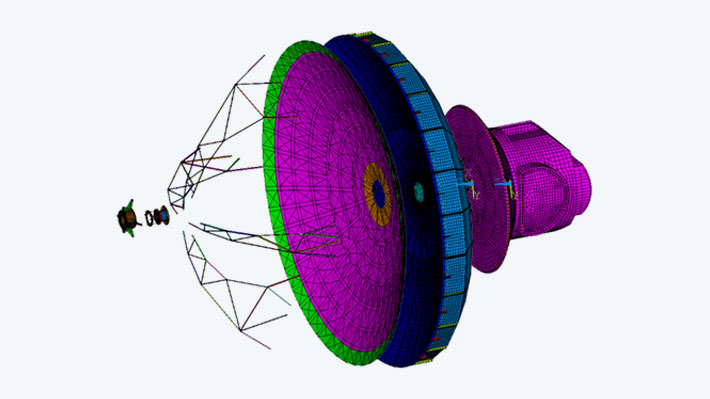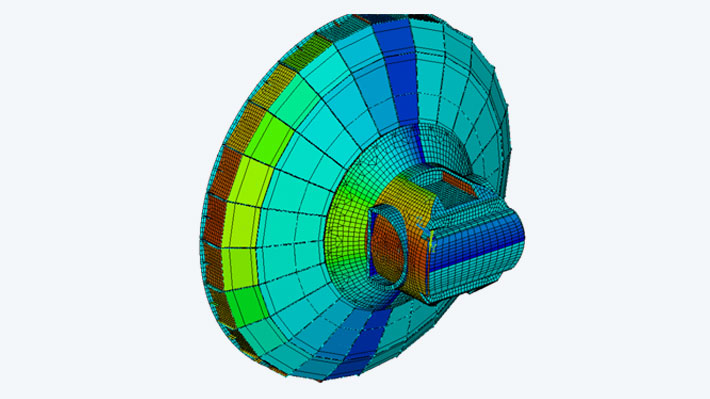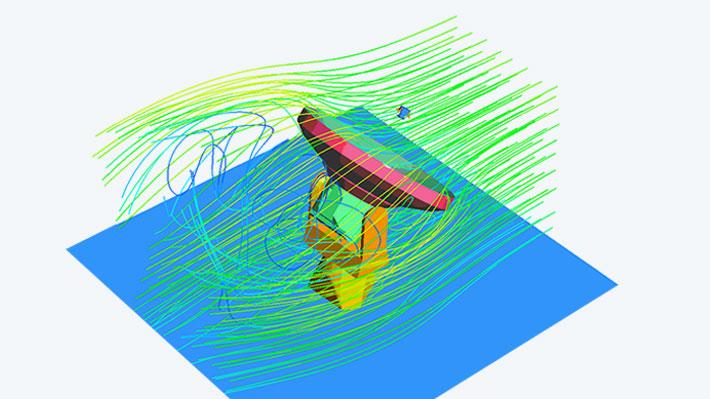
Thermal analysis of a large antenna
Sector: Machinery and plant engineeringSpecialist field: Structural mechanicsCPI VERTEX Antennentechnik GmbH is the manufacturer of the ALMA (Atacama Large Millimeter Array) telescope with an antenna diameter of 12m. For this system, a thermal analysis is needed, which CADFEM prepared with Ansys simulation tools.
Summary
Task
Due to the given specifications, the antenna had to be analyzed considering solar radiation, radiation and, of course, convective heat transfer to the environment.
Solution
Taking into account the heat transfer effects of thermal conduction, thermal convection and thermal radiation, CADFEM was able to determine the temperature field of the antenna in Ansys. As a particular challenge, the thermal analysis of the convective heat transfer component to the environment was combined with a CFD analysis. Therefore, the wind influence on the temperature field of the antenna was also calculated.
Customer benefits
VERTEX Antennentechnik GmbH received a complex thermal analysis of the antenna system from the CADFEM consulting team.
Project Details
Task
Imagine the sunrise at the foothills of the Chilean Andes. The wind is slowly blowing through the dry Atacama desert. This scenario does not come from the imagination of a lonely adventurer, but rather is the given thermal load case for the construction of one of the telescopes of the ALMA (Atacama Large Millimeter Array) project. VERTEX Antennentechnik GmbH required a comprehensive thermal analysis as a simulation model in Ansys.

Customer Benefit
VERTEX antenna technology GmbH received a complex thermal analysis of the antenna system in various ANSYS simulation models from the CADFEM consulting team.

Solution
Aufgrund der vorgegebenen Spezifikationen musste die Antenne unter Berücksichtigung der Sonnenstrahlung, der Abstrahlung und natürlich der konvektiven Wärmeübertragung an die Umgebung analysiert werden. Unter Berücksichtigung der Wärmeübertragungseffekte Wärmeleitung, Wärmekonvektion und Wärmestrahlung war es möglich, das Temperaturfeld der Antenne zu bestimmen. Sowohl die stationäre als auch die instationäre Analyse liefert wertvolle Informationen über die resultierenden thermischen Belastungen der Struktur. Besondere Sorgfalt musste für die laminierte CFK-Struktur aufgewendet werden. Durch Idealisierung der CFK-Materialeigenschaften konnten viele Vereinfachungen vorgenommen werden. Als besondere Herausforderung wurde die thermische Analyse des konvektiven Wärmeübertragungsanteils an die Umgebung mit einer CFD-Analyse kombiniert. Daher wurde auch der Windeinfluss auf das Temperaturfeld der Antenne berechnet. Das resultierende Temperaturfeld kann für nachfolgende Strukturanalysen verwendet werden, um thermische Verformungen oder kritische thermische Spannungszonen zu bestimmen.

Images: © VERTEX antenna technology




